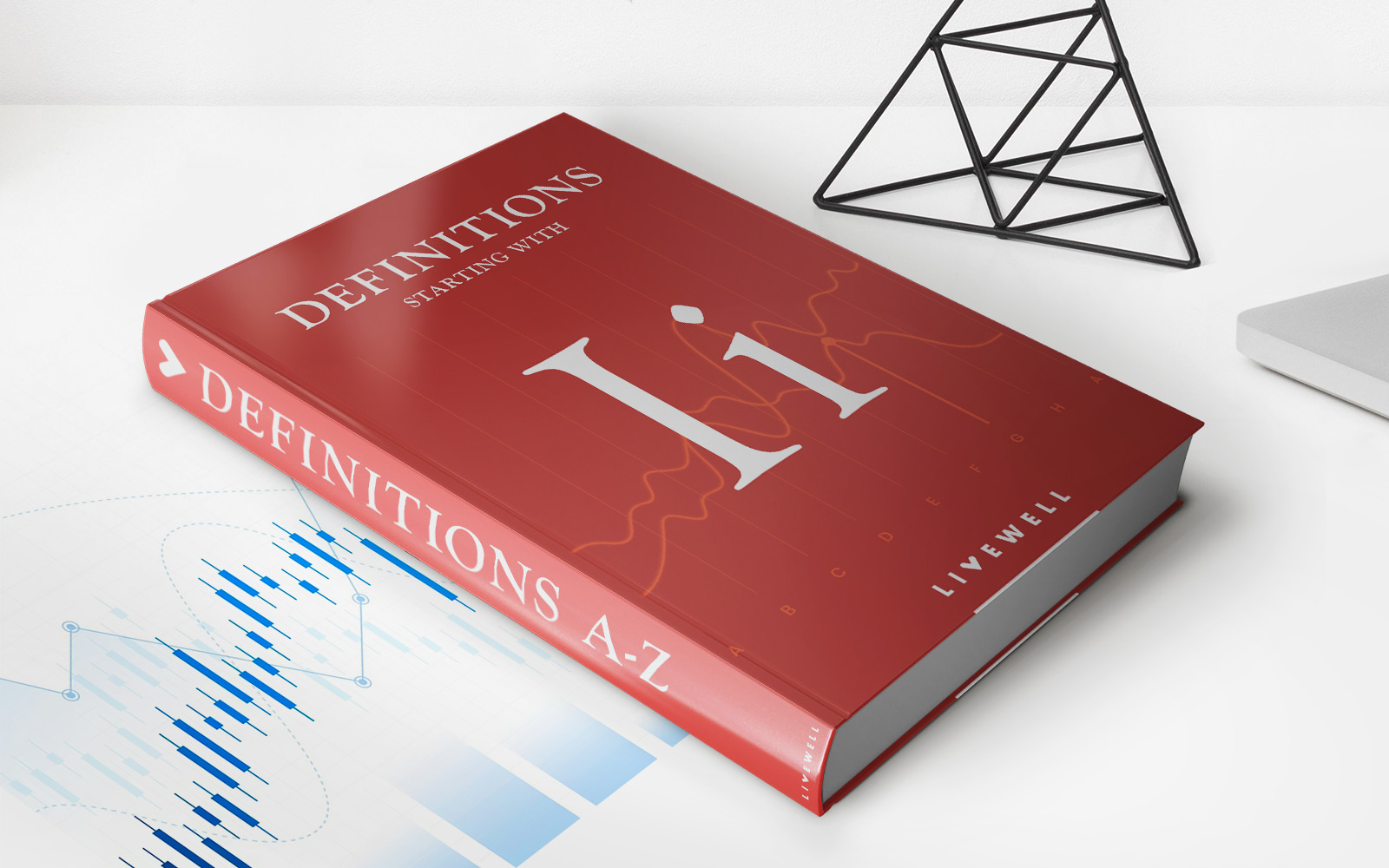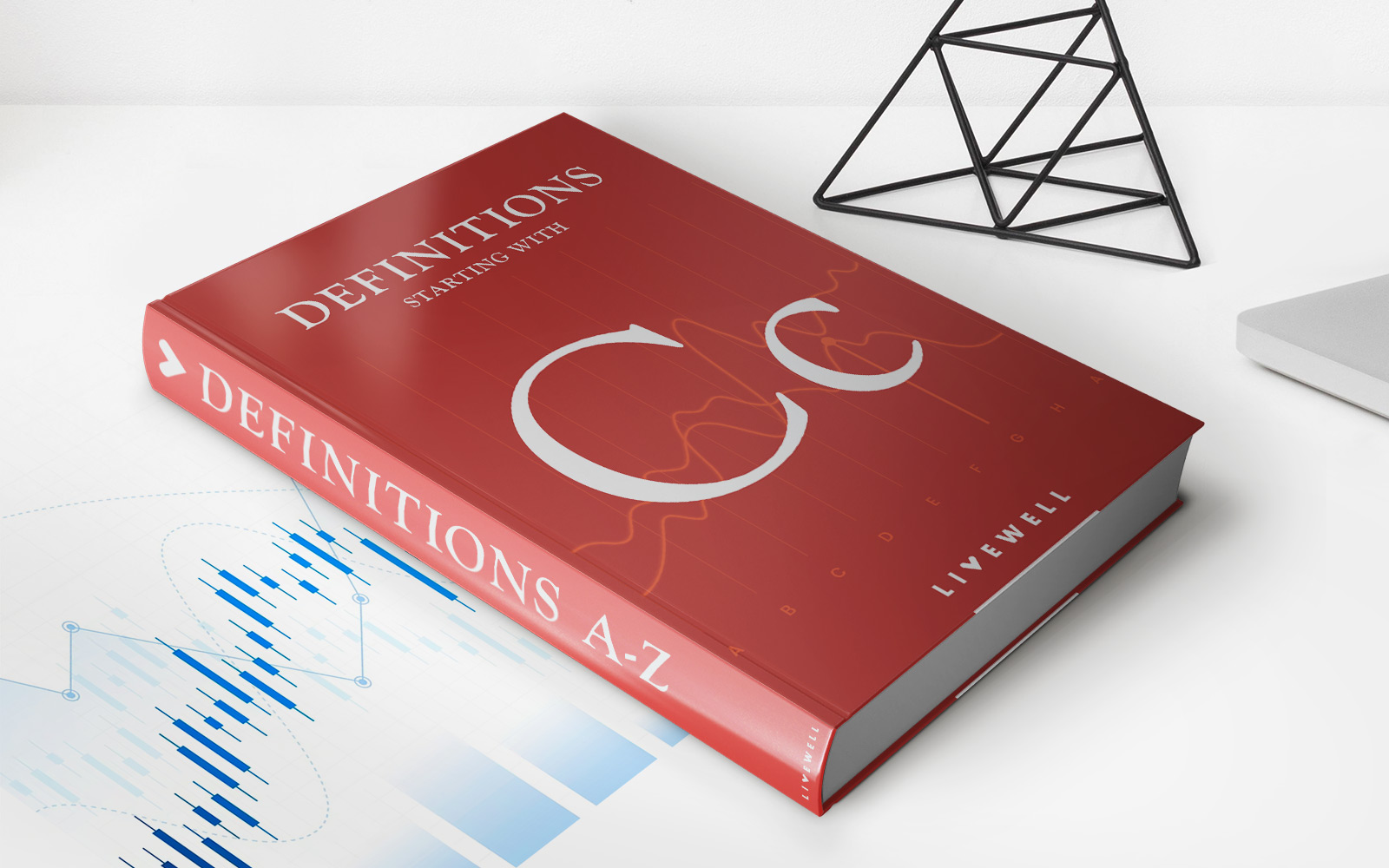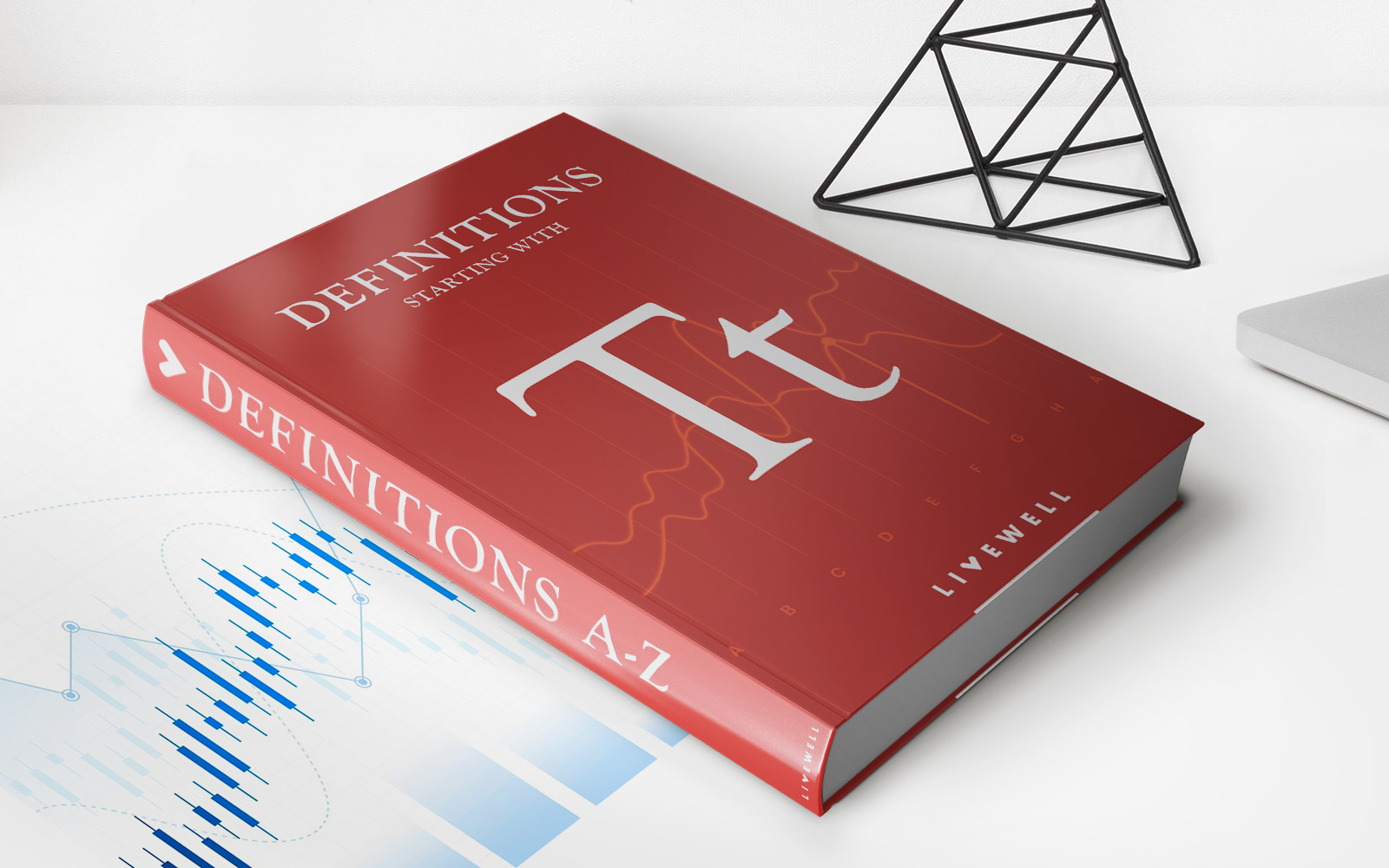

Finance
What Does ISO Mean In Insurance
Published: November 28, 2023
Learn what ISO means in insurance and how it relates to finance. Discover its significance and impact on insurance policies and coverage.
(Many of the links in this article redirect to a specific reviewed product. Your purchase of these products through affiliate links helps to generate commission for LiveWell, at no extra cost. Learn more)
Table of Contents
Introduction
Insurance is an essential aspect of our lives, providing financial protection against unexpected events. Whether it’s insuring our homes, cars, or businesses, we rely on insurance to safeguard our assets and mitigate risks. However, the insurance industry can be complex and ever-evolving, leaving many people grappling with the intricacies of insurance policies and coverage.
One key factor in the insurance industry is the Insurance Services Office, commonly known as ISO. ISO plays a pivotal role in standardizing insurance policies, assessing risks, and providing valuable data and analytics to insurance companies. Understanding what ISO means in the context of insurance is crucial for both insurance professionals and policyholders.
ISO, or the Insurance Services Office, is an organization that develops and provides various services and products to the insurance industry. Founded in 1971, ISO has become a leading provider of standardized information and analytical solutions for insurers, brokers, and regulators.
The primary goal of ISO is to facilitate efficiency and accuracy in the insurance sector. They achieve this by developing standardized insurance policy forms, collecting and analyzing data, and assisting insurance companies in managing risks effectively. ISO’s efforts ensure that insurance policies are consistent, transparent, and align with industry best practices.
In the following sections, we will explore the definition of ISO, its purpose in insurance, the different types of ISO insurance policies, as well as the benefits and drawbacks of using ISO standards. We will also delve into ISO ratings, endorsements, forms, and the crucial role ISO plays in claims handling.
By the end of this article, you will have a comprehensive understanding of ISO and its impact on the insurance landscape. This knowledge will empower you to make informed decisions when it comes to selecting insurance policies and dealing with insurance claims, ultimately ensuring that you have the right level of coverage for your needs.
Definition of ISO
ISO stands for the Insurance Services Office, an organization that provides essential services and products to the insurance industry. ISO plays a significant role in developing and maintaining standardized insurance policies, collecting data for risk assessment, and offering valuable analytical solutions to insurance companies.
ISO acts as a central hub for insurance industry knowledge and expertise. It serves as a platform for insurers, brokers, and regulators to access standardized information and tools that enable effective risk management and policy development.
ISO’s key functions include:
- Developing standardized insurance policy forms: ISO creates and updates standard insurance policy forms used by insurance companies across the United States. These policy forms serve as a foundation for insurance contracts and provide clarity and consistency in policy language and coverage.
- Collecting and analyzing data: ISO collects vast amounts of data and analyzes it to provide insights and trends to the insurance industry. This data helps insurers make informed decisions about pricing, underwriting, and claims management.
- Establishing risk assessment tools: ISO develops risk assessment tools, such as rating manuals and underwriting guidelines, which assist insurers in evaluating and pricing risks accurately. These tools promote fairness, consistency, and accuracy in risk assessment.
- Providing analytical solutions: ISO offers robust analytical solutions to insurance companies, enabling them to assess risks, identify emerging trends, and enhance underwriting and claims processes. These solutions help insurers stay competitive in a rapidly evolving insurance landscape.
ISO’s contributions are vital for insurance professionals and policyholders alike. By standardizing insurance policies and providing analytical insights, ISO helps ensure that insurance policies are transparent, consistent, and aligned with industry best practices. This standardization promotes fairness and clarity for both the insurer and the policyholder.
Overall, ISO plays a crucial role in maintaining industry standards and enhancing the efficiency and effectiveness of the insurance industry. Its dedication to providing quality products and services has made it a trusted and relied-upon resource for insurers and insurance professionals.
Purpose of ISO in Insurance
ISO serves several important purposes in the insurance industry. Its main goal is to provide standardized information, tools, and services that enhance efficiency, accuracy, and consistency in the insurance sector. Here are the key purposes of ISO in insurance:
- Standardizing insurance policies: One of the primary purposes of ISO is to develop standardized insurance policy forms. These policy forms are widely used by insurance companies across the United States, providing a consistent language and structure for insurance contracts. Standardization helps insurers, brokers, and policyholders understand the terms and coverage offered, reducing confusion and disputes.
- Facilitating risk assessment: ISO plays a crucial role in facilitating risk assessment for insurance companies. It collects and analyzes vast amounts of data to identify trends, patterns, and risk factors. This enables insurers to make informed decisions when assessing risks and pricing policies. By relying on ISO’s data and analytical tools, insurers can ensure that their underwriting and pricing practices are based on accurate and comprehensive information.
- Enhancing underwriting and rating accuracy: ISO’s rating manuals, underwriting guidelines, and risk assessment tools contribute to the accuracy and consistency of underwriting practices. Insurers can utilize ISO’s guidelines and tools to evaluate risks more effectively, ensuring that they provide coverage that aligns with the level of risk presented by each policyholder. This helps insurers avoid overpricing or underpricing policies, leading to fairer premiums.
- Promoting industry best practices: ISO not only provides standardized policy forms and risk assessment tools but also promotes industry best practices. Through its research and analysis, ISO identifies emerging trends and issues within the insurance industry and shares this knowledge with insurers. By adhering to ISO standards and guidelines, insurers can adopt improved practices, streamline operations, and provide better products and services to policyholders.
- Assisting in regulatory compliance: ISO’s standardization efforts assist insurance companies in meeting regulatory requirements. Insurers can rely on ISO’s standardized policy forms and rating manuals to ensure compliance with state regulations. This helps make the insurance process more transparent, consistent, and compliant, benefitting both the insurer and the policyholder.
In summary, the purpose of ISO in insurance is to provide standardized policy forms, data analysis, risk assessment tools, and industry best practices. By doing so, ISO helps insurers streamline their operations, assess and price risks accurately, comply with regulations, and ultimately provide better products and services to policyholders.
ISO Insurance Policies
ISO plays a significant role in developing standardized insurance policies that are widely used by insurance companies across the United States. These policies cover a range of insurance types, including property, liability, auto, and more. Here are some key ISO insurance policies:
- Commercial Property Insurance: ISO offers standardized policy forms for commercial property insurance, which protect businesses against property damage and loss. This includes coverage for buildings, equipment, inventory, and business interruption due to covered perils like fire, theft, and natural disasters.
- Personal Property Insurance: ISO provides standardized policy forms for personal property insurance, which cover individuals’ personal belongings against damage or theft. This includes coverage for items such as furniture, electronics, jewelry, and more.
- Commercial General Liability Insurance (CGL): ISO offers standardized policy forms for commercial general liability insurance, which protect businesses against third-party bodily injury, property damage, and personal injury claims. CGL policies provide coverage for legal defense costs and potential settlements or judgments.
- Auto Insurance: ISO provides standardized policy forms for auto insurance, covering personal and commercial vehicles. These policies include liability coverage, which protects against third-party injury or property damage, as well as collision and comprehensive coverage for damages to the insured vehicle.
- Umbrella Insurance: ISO offers standardized policy forms for umbrella insurance, which provide additional liability coverage above the limits of underlying policies. Umbrella policies offer broader protection and higher limits, extending coverage for situations that may exceed the limits of primary policies.
- Workers’ Compensation Insurance: ISO provides standardized policy forms for workers’ compensation insurance, which protect employers against liability for workplace injuries and illnesses. These policies provide medical benefits, lost wage replacement, and rehabilitation services for injured workers.
- Homeowners Insurance: ISO offers standardized policy forms for homeowners insurance, covering residential properties against various risks. These policies typically include coverage for the dwelling, personal property, liability, and additional living expenses in the event of damage or loss.
These are just a few examples of the insurance policies standardized by ISO. Each policy type has specific policy forms and coverage options that insurers can tailor to meet the needs of policyholders. ISO’s standardized policy forms provide consistency, transparency, and clarity, enabling insurers and policyholders to have a clear understanding of the coverage being offered.
Benefits of ISO in Insurance
The Insurance Services Office (ISO) plays a crucial role in the insurance industry, offering numerous benefits to insurers, insurance professionals, and policyholders. Here are some key benefits of ISO in insurance:
- Standardization: One of the significant benefits of ISO is the standardization of insurance policies. ISO develops and maintains standardized policy forms that provide a consistent framework for insurance contracts across the industry. This standardization promotes transparency and clarity, ensuring that policyholders have a clear understanding of their coverage and reducing disputes and confusion.
- Efficiency: ISO’s standardized policy forms and rating manuals enhance operational efficiency for insurance companies. Insurers can rely on ISO guidelines to streamline their underwriting processes, resulting in quicker policy issuance. The standardized forms also facilitate faster claims handling and reduce the administrative burden, improving overall efficiency and customer satisfaction.
- Accurate Risk Assessment: Through its data collection and analysis, ISO provides valuable insights and risk assessment tools to insurance companies. This helps insurers evaluate risks accurately, leading to more precise underwriting and pricing decisions. By utilizing ISO’s risk assessment tools, insurers can ensure that they are charging appropriate premiums based on the level of risk presented by policyholders.
- Industry Best Practices: ISO promotes industry best practices by sharing research, trends, and emerging issues with insurers. This enables insurance companies to stay up-to-date with the latest developments in the industry, adopt improved practices, and enhance their operations. By aligning with ISO standards and guidelines, insurers can provide better products and services that meet customer needs while remaining competitive in the market.
- Regulatory Compliance: ISO’s standardized policy forms and rating manuals assist insurers in meeting regulatory requirements. Insurers can rely on ISO’s forms and guidelines to ensure compliance with state regulations, avoiding discrepancies and penalties. This promotes transparency, consistency, and fairness in the insurance industry, benefitting both insurers and policyholders.
- Data and Analytics: ISO collects and analyzes vast amounts of data, offering insurers access to valuable insights and analytics. This data-driven approach enables insurance companies to make informed business decisions, assess market trends, and identify emerging risks. The availability of comprehensive data helps insurers develop effective strategies, improve underwriting practices, and enhance overall risk management.
Overall, the benefits of ISO in insurance are numerous. From standardization and efficiency to accurate risk assessment and access to valuable data and analytics, ISO significantly contributes to the effectiveness and growth of the insurance industry. Its efforts help insurers provide better products and services, ultimately benefiting policyholders by ensuring transparency, fairness, and adequate coverage.
Drawbacks of ISO in Insurance
While the Insurance Services Office (ISO) provides significant benefits to the insurance industry, there are also some drawbacks associated with its use. It’s essential to consider these drawbacks to have a balanced perspective. Here are some notable drawbacks of ISO in insurance:
- Limited Flexibility: One of the main drawbacks of ISO is that its standardized policy forms may limit the flexibility of insurers to tailor coverage to specific customer needs. Insurers may be bound by the predefined terms and conditions outlined in the ISO forms, which can be challenging when dealing with unique or unconventional risks.
- Slow Adaptation to Market Changes: ISO’s processes for updating policy forms and guidelines can be time-consuming. As a result, ISO may not always reflect the most current market practices and emerging risks in a timely manner. This lag in adaptation to market changes can hinder insurers from promptly responding to evolving customer needs and industry trends.
- Cost: While ISO provides valuable services, there is a cost associated with accessing and utilizing its standardized policy forms, rating manuals, and analytical tools. Insurance companies need to pay fees for their membership and access to ISO’s resources. This additional cost may impact smaller insurance companies, particularly those operating on tighter budgets.
- Dependency on ISO: Reliance on ISO for standardized policy forms and rating manuals means that insurance companies are dependent on a single organization for critical resources. This dependency may limit the ability to diversify or innovate in policy development, as insurers are tied to the standards set by ISO.
- Complexity: ISO’s standardized policy forms can be complex and lengthy, containing dense legal language that may be difficult for policyholders to fully comprehend. This complexity may lead to misunderstandings, potential gaps in coverage, and difficulties in the claims process. Insurers need to ensure that policyholders have a clear understanding of the terms and conditions of their policies.
- One-Size-Fits-All Approach: While ISO’s standardization promotes consistency and clarity, it may not always cater to the unique needs of every policyholder. Standardized policy forms may adopt a “one-size-fits-all” approach, which may not adequately address specific risks or coverage requirements for certain industries or niche markets.
It is important for insurers and insurance professionals to be aware of these drawbacks and carefully consider how they may impact their operations and relationships with policyholders. While ISO provides significant benefits, it’s essential to find a balance between standardized practices and the need for flexibility and individualization in the insurance industry.
ISO Insurance Ratings
ISO Insurance Ratings play a critical role in the insurance industry. These ratings provide valuable insights into the financial strength and stability of insurance companies, helping policyholders and other stakeholders make informed decisions. ISO assigns ratings to insurance companies based on their financial performance and ability to meet contractual obligations. Here is an overview of ISO Insurance Ratings:
The ISO Insurance Ratings are based on a scale that ranges from ‘1’ to ’10,’ with a ‘1’ rating indicating the highest level of financial strength and stability, and a ’10’ rating signifying the lowest level. The ratings reflect the evaluation of an insurer’s ability to pay claims and meet its financial obligations.
The criteria considered in determining the ISO Insurance Ratings include:
- Financial Stability: ISO assesses an insurance company’s financial stability by evaluating its capital adequacy, reserves, investment portfolio, and profitability. A strong financial position ensures that the insurer has sufficient funds to meet potential claims and obligations.
- Claims-Paying Ability: The ability of an insurance company to honor its contractual obligations and pay claims promptly is a critical factor in determining the ISO Insurance Ratings. This includes evaluating the insurer’s claims management processes, liquidity, and historical claims payment record.
- Operational Performance: ISO also considers an insurance company’s operational performance, including its underwriting practices, risk management strategies, and compliance with industry regulations. Evaluating an insurer’s operational performance helps gauge its overall effectiveness in managing risks and maintaining profitability.
- Market Standing: The competitive position and market reputation of an insurance company are also taken into account. ISO assesses factors such as market share, customer retention rates, and the insurer’s reputation among policyholders and industry professionals.
The ISO Insurance Ratings provide valuable information to policyholders, insurance agents, and regulatory authorities. These ratings assist in making informed decisions when choosing an insurance provider or evaluating the financial stability of an existing insurer.
It is important to note that ISO Insurance Ratings are not the only ratings available in the industry. Other rating agencies, such as A.M. Best, Fitch Ratings, Moody’s, and Standard & Poor’s, also provide their own ratings based on their respective criteria. Nonetheless, ISO Insurance Ratings remain a trusted and widely used measure of an insurer’s financial strength and stability in the industry.
Policyholders and insurance professionals should consider a variety of factors, including the ISO Insurance Rating, when selecting an insurance company. By evaluating the financial strength and stability of insurers, policyholders can have confidence in their insurance coverage and trust that their claims will be handled efficiently and effectively.
ISO Endorsements and Forms
In addition to standardized insurance policies, the Insurance Services Office (ISO) provides a wide range of endorsements and forms that insurers can use to tailor coverage to meet the specific needs of policyholders. These ISO endorsements and forms enhance flexibility and customization within the standardized framework of insurance policies. Here is an overview of ISO endorsements and forms:
Endorsements: ISO endorsements are additional provisions or modifications added to an insurance policy to provide specific coverage enhancements or exclusions. These endorsements allow insurers to customize policies based on policyholders’ unique requirements. Common examples of ISO endorsements include:
- Additional Insured Endorsement: This endorsement adds another entity or individual as an insured under the policy, extending coverage to them.
- Limitation or Exclusion Endorsement: An endorsement that modifies or limits the coverage provided by the policy, excluding specific risks or circumstances from coverage.
- Riders and Floaters: These endorsements are used to add coverage to policies that may not be included in standard forms. Examples include jewelry floaters, scheduled equipment riders, or additional coverage for high-value items.
- Loss Payee or Mortgagee Endorsement: This endorsement adds an entity, such as a lender or mortgagee, to the policy as a named insured, ensuring that they are protected in the event of loss or damage to the insured property.
- Waiver of Subrogation Endorsement: An endorsement that waives the insurer’s right to recover damages from a third party responsible for a loss covered by the policy. This is often used in commercial insurance to protect contractors and subcontractors.
Forms: ISO also offers various forms that insurers can use to create customized policy language and endorsements. These forms serve as a starting point for insurers to develop their own unique policy provisions based on specific coverage needs. Examples of ISO forms include:
- Declarations Pages: These forms provide important information about the policyholder, insured property, coverage limits, deductibles, policy periods, and other essential details.
- Conditions Forms: These forms outline the terms and conditions of the policy, including requirements for policyholders to comply with to ensure coverage, such as notice of claims, cooperation with investigations, and resolution of disputes.
- Exclusion Forms: These forms specify certain risks or circumstances that are specifically excluded from coverage under the policy.
- Coverage Forms: These forms define the scope and specifics of the coverage provided by the policy, including coverage limits, specific risks covered, and any additional provisions or limitations.
- Amendment Forms: Amendment forms are used to modify existing policy provisions or endorsements to accommodate changes requested by the policyholder or to comply with regulatory requirements.
These ISO endorsements and forms provide insurers with the flexibility to meet the unique needs of their policyholders while maintaining a standardized framework for policy language and structure. By using these endorsements and forms, insurers can create tailored insurance solutions that align with the individual risk exposures and coverage preferences of policyholders.
ISO Claims Handling
Effective claims handling is a critical aspect of the insurance industry, ensuring that policyholders receive prompt and fair compensation for covered losses. The Insurance Services Office (ISO) plays a significant role in facilitating efficient and seamless claims handling processes for insurance companies. Here is an overview of ISO’s involvement in claims handling:
Claims Forms: ISO develops standardized claims forms that insurance companies can utilize to gather necessary information when policyholders report a claim. These forms typically include essential details such as insured’s information, loss details, and other relevant information required to initiate the claims process. The standardized forms streamline and expedite information gathering, promoting efficiency and consistency in claims handling.
Claims Data Collection and Analysis: ISO collects vast amounts of claims data from insurance companies and performs detailed analysis. By analyzing this data, ISO can identify trends, patterns, and potential fraud indicators. This information helps insurers in the claims handling process by providing insights into the frequency and severity of different types of losses, enabling them to make informed decisions.
Benchmarking: ISO benchmarks claims data to provide insurers with comparison metrics to evaluate their claims performance. This allows insurers to assess their own claims handling efficiency, accuracy, and customer service against industry standards and competitors.
Claims Technology Solutions: ISO provides technology solutions and tools to insurance companies, including claims management systems and software. These tools help automate various aspects of the claims process, such as claims intake, documentation, evaluation, and settlement. The use of technology enhances efficiency, reduces errors, and improves the overall claims handling experience for both insurers and policyholders.
Loss Costs and Settlement Values: ISO’s analysis of claims data enables them to provide information on loss costs and settlement values for specific types of claims. This information helps insurers in accurately estimating the potential costs of claims and ensuring fair compensation to policyholders.
Best Practices and Guidelines: ISO publishes best practices and guidelines related to claims handling. These resources serve as valuable references for insurers, providing guidance on efficient claims processing, fraud detection, dispute resolution, and customer service. By adhering to ISO’s best practices, insurers can enhance their claims handling practices and provide better service to policyholders.
The involvement and support of ISO in claims handling processes benefit insurance companies and policyholders alike. It promotes consistency, efficiency, and accuracy in claims processing. Additionally, ISO’s data analysis and benchmarking enable insurers to make data-driven decisions, ensuring fair compensation and effective risk management.
It is important to note that ISO’s role in claims handling is not exclusive. Insurance companies may have their own internal claims processes and systems that supplement or integrate with ISO’s offerings. The collaboration between ISO and insurers, along with their respective claims handling expertise, helps ensure a smooth and efficient claims experience for policyholders.
Conclusion
The Insurance Services Office (ISO) plays a crucial role in the insurance industry, providing standardized policies, endorsements, and forms that promote consistency, efficiency, and transparency. Throughout this article, we have explored the various aspects of ISO in insurance, including its definition, purpose, insurance policies, benefits, drawbacks, ratings, endorsements, and claims handling.
ISO’s standardization efforts bring numerous benefits to the insurance industry. With standardized policy forms, insurers can provide clear and consistent coverage to policyholders, reducing confusion and disputes. ISO’s data collection and analysis provide valuable insights, enabling insurers to assess risks accurately, refine underwriting practices, and enhance overall risk management. Insurance professionals and policyholders can rely on ISO’s ratings to evaluate the financial strength and stability of insurers, making informed decisions about insurance coverage.
While ISO offers significant advantages, there are also drawbacks to consider. The standardized nature of ISO policies may restrict flexibility in tailoring coverage to unique needs. Timely adaptation to market changes can be a challenge, and there are associated costs with accessing ISO’s resources. However, these barriers are balanced by the advantages of consistency, efficiency, and industry best practices that ISO promotes.
ISO’s involvement in claims handling brings further benefits to insurers and policyholders. Standardized claims forms, benchmarking data, and technology solutions streamline and enhance the efficiency of the claims process. ISO’s data analysis provides valuable insights into loss trends, aiding accurate estimation of claim costs and fair compensation to policyholders. Best practices and guidelines from ISO contribute to improved claims handling practices, ensuring prompt and satisfactory resolution of claims.
In summary, ISO’s contributions to the insurance industry are manifold. From providing standardized policies and forms to facilitating accurate risk assessment, promoting best practices, and supporting efficient claims handling, ISO plays a pivotal role in maintaining industry standards and enhancing the effectiveness of insurers. By adhering to ISO guidelines and utilizing its resources, insurers can provide policyholders with reliable coverage and exceptional service.
As the insurance landscape continues to evolve, ISO’s commitment to excellence and innovation will remain crucial in ensuring the industry’s growth and resilience. Understanding ISO and its impact empowers insurance professionals and policyholders to navigate the complex world of insurance with confidence, ultimately facilitating better-informed decisions and robust protection against unexpected events.














